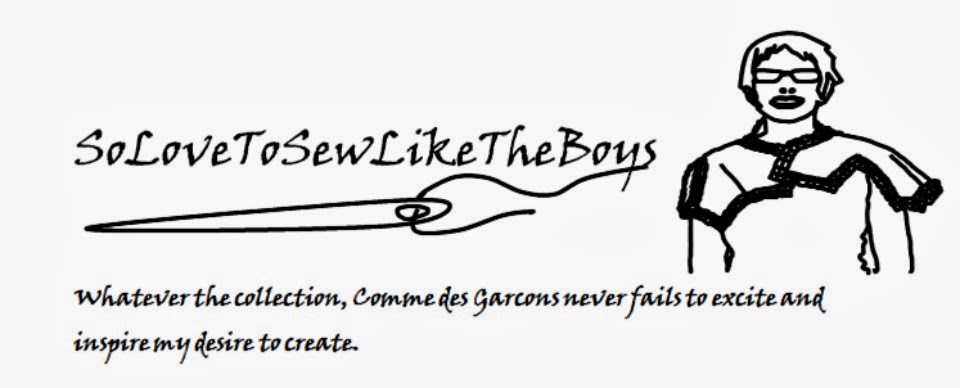I want to look at historical influences in this blog. Historical and cultural influences are strong components in fashion/clothing design. I deliver a Level One NCEA course at school concerning this very premise, students research their cultural backgrounds, then design and construct a textile outcome which is inspired by it. It's really interesting, as to the concepts they create. I'll post some images further on in this blog.
Anyway, historical influences as they relate to some of my beloved CdG's recent collections.........
The crinoline is an interesting item of historical clothing. It may be hard to understand it today, but the crinoline was considered a very liberating item of underclothing for women. Prior to the crinoline, a woman had to wear a considerable number of heavy petticoats to produce the required bell shape. The crinoline made it a much more "lightweight" affair to achieve that form.
http://agnautacouture.com/2013/06/09/body-modification-in-fashion-crinolines-comme-des-garcons/
Check out part 2 of body modification in fashion, it is fascinating...piercings, tattooing and scarification.
The scarification section reminded me of a student who based her work on this feature. I have sorted a few images from her folder, as it was quite exciting work she undertook. The class was working toward a fashion parade event, based on the theme of Africa.
 |
| Making her appearance on the catwalk, right in character, carrying a spear, picked up from Drama dept. props! The hair and face markings were a nice touch, I thought. |
 |
| This outcome comes from a Korean heritage..Hanbok garment inspiration. This student had a good feeling for fabrics and how to use them. |
This is a Pasifika inspiration. You can see by the screen printed pattern around the skirt. The student was working with her take on the pulatashi garment. I think it is very pretty, well composed with the white sleeve and white screen print. I imagine this is a very appropriate dress to wear to Sunday church.
And, here we have a cool hoodie. This student has screen printed her own design. Surname on the back, nice font, and on the sleeve is a pasifika image with a rosary bead. This is a reflection of her ethnic and religious culture...I love it, she did such a good job with her printing.
The first two garments, Irish & Korean, are by 2 students who have gone on to further wonderful design study. They are now at design school and doing very well. Check out their web site www.soarewe.com/blog/
and you'll see some of their work. If you go to the fashion section, you will see some of the work they designed and created in other Fab. Tech. projects. It is extremely fab.
---------------------------------------------------------------------------------------------------------
I've finished off a couple of skirts I'd been working on. One is a black skirt that is inspired by CdG's 2013 S/S RTW collection. This collection focused on a theme of "crushing" and contained a familiar feature, clothes on clothes or clothes coming out of clothes, which I often have fun with. The "crushing" I undertook on my skirt was creasing and folding at the hem level.
I cut a very long A-Line skirt, double folded the hem edge and the seam edges, then began the creasing and folding of the hem section. I started on the dress stand, but it proved difficult, so just took it upstairs and worked all the creasing on the ironing board with the steam iron. Eventually I was satisfied.
Once I was pleased with how the hem was creased and folded, I pinned and stitched sections in place. I like the uneven hem, and it is nicely weighted with the folded layers of fabric.
Here is an image of a garment from the actual collection, to get an idea of what Rei was up to
Fantastic crushing and folding with great fabric.
---------------------------------------------------------------------------------------------------------
The second skirt................take one rather plain ordinary pink skirt.... shorten it........
Next, put the 2 layers together and attend to the finishing, and I have a much more interesting skirt!
I know, it needs a bit of a press!
Ruffles are such fun and very CdG.
Look at some "bursting ruffles" from CdG SS14
These images come 'The Cutting Class", which is a great web site.
Here's a wee bit of fun to finish with. In my 4th blog I introduced Lynn Yaeger, a fascinating New York woman who also loved Comme des Garcons. I really appreciated Lynn's approach to her physical appearance. I think she is an inspiration......look at this image.....
The one on the right is moi.......could we be related!! And look at this cut and splice image....
Together, we are almost one! Admittedly, Lynn's fringe is straighter than mine, apparently I just wouldn't sit still!
SLTSLTBsigning off for now.




































